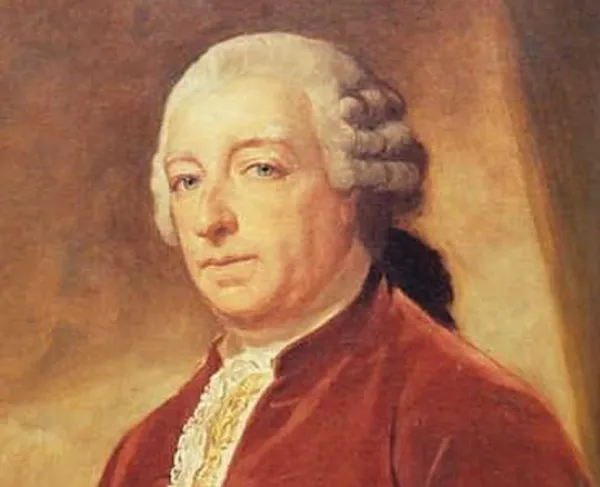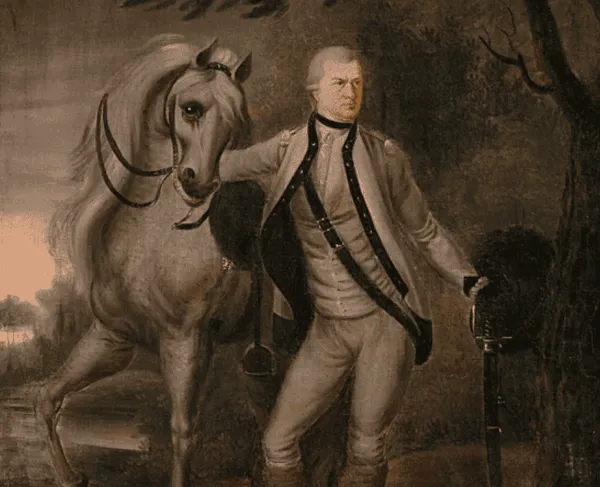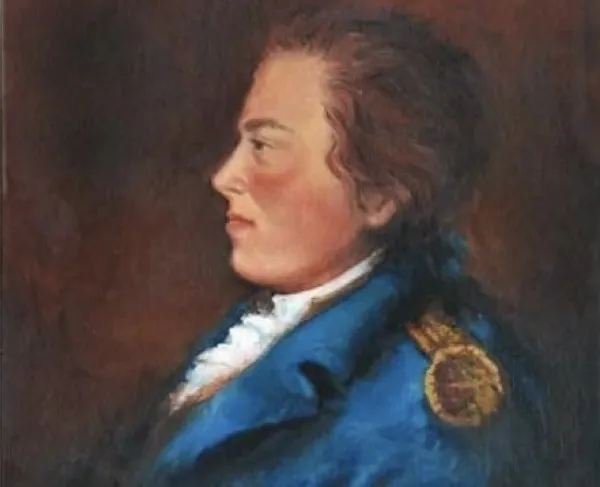Lord George Germain

One of the most prominent members on Lord Frederick North’s cabinet, George Germain, 1st Viscount Sackville held the position of Secretary of State for the Colonies throughout the Revolutionary War, and so shared a heavy amount of blame for Britain’s ultimate defeat.
Christened George Sackville at birth, George’s father, Lionel Sackville, was one of the most prestigious aristocrats of early to mid-18th century England. As Duke of Dorset and Lord Lieutenant of Ireland, Lionel Sackville maintained friendships with characters like Horace Walpole, author Johnathan Swift, and even convinced King George I to attend young George’s baptism and assume the role of his godfather. George received one of the best educations available in England, first attending the Westminster School in London and later earning a degree at Trinity College, Dublin. But Sackville initially chose the military as a career path, rather than politics, entering the 7th Horse as a captain and later transferred to the Gloucester Regiment as a lieutenant colonel in time for the War of Austrian Succession. Sackville led his men bravely but was wounded and captured in his very first battle at Fontenoy in 1745. He continued to serve in the army upon his release and promoted to major general upon the outbreak of the Seven Years War (the French and Indian War). Serving mostly in Europe, Sackville’s military career came to an end at the Battle of Minden in 1759, where for one reason or another, he ignored repeated attempts to call a cavalry charge until it was too late. The combined Anglo-German force defeated the French army, but Sackville was accused of cowardice, court-martialed, found guilty, and forced from the army, designated “unfit to serve his majesty in any military capacity whatsoever.”
Desperate to improve his fortunes, Sackville used the 1760 ascension of George III to the throne as a chance to rehabilitate himself. He returned to the Privy Council in 1765 and supported Lord North’s promotion to Prime Minister in 1769. Meanwhile, a chance inheritance from Lady Elizabeth Germain, a friend of his father, gave him the ownership of her prosperous estates and the lavish Drayton House in Northhamptonshire as well as her family name, calling himself Lord George Germain from then on.
Germain’s support for Lord North paid off in 1775 when he replaced Lord Dartmouth as Secretary of State for the American Department, making him intensely involved with forming the British strategy in the Revolutionary War and coordinating the British armies in North America. Germain, like the Prime Minister, had no faith that the Americans’ ability to wage a sustained conflict, leading to several notable early failures such as Saratoga that caused him to rethink his strategy. Unfortunately, just as he was starting to get a grip on the matter at hand, France, Spain and the Dutch Republic entered the war, stealing Britain’s attention away from the colonies. This distraction caused Germain to send unclear orders to Lord Charles Cornwallis, which contributed to the latter’s defeat at Yorktown, bringing an end to most of the fighting in North America. The opposition in the House of Commons made Germain out to be the scapegoat for the defeat, and Germain resigned from his position in 1782. The rest of the cabinet, including North himself, followed soon after.
It is likely that Germain could have made himself a pariah after two notable failures, but due to his worsening health, the possibility did not matter one way or the other. Lord Germain died in his country home in 1785. A few of his close friends continued to defend his military and political records, however, including Richard Cumberland’s account called The late Viscount Sackville.





